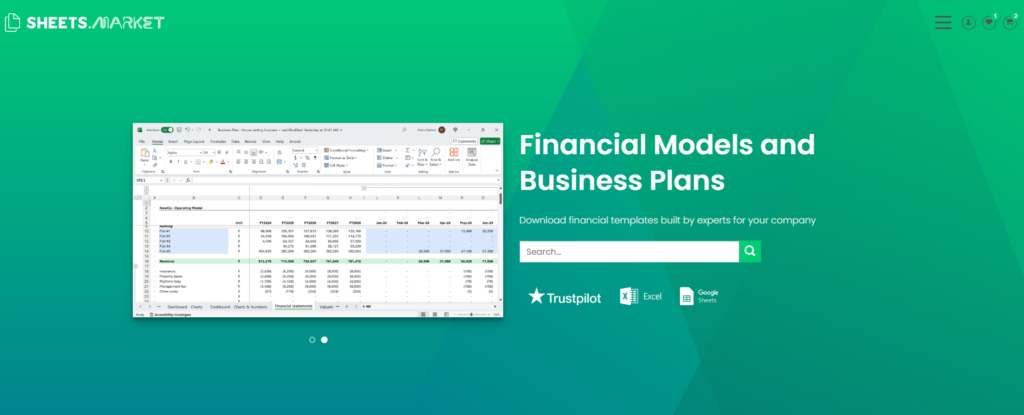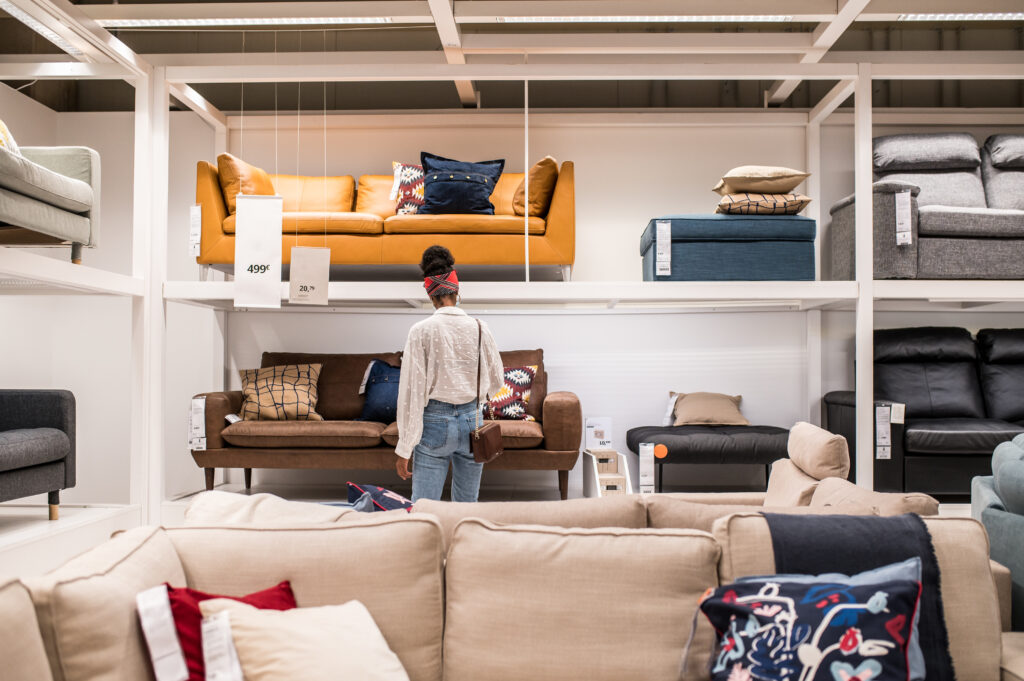Business Planning & Strategy, Financial Models
Furniture Store Business: Costs, Revenue Potential & Profitability
Furniture retail operates in a capital-intensive, low-frequency purchase category where success depends on showroom monetization, inventory turnover, and gross margin control. While average transaction values are high, holding costs, logistics, and markdown risk threaten profitability. Sustainable operators focus on space efficiency, custom order pipelines, and delivery execution, not just footfall.
Asset Configuration
CapEx is high due to large-format space needs, display buildout, and warehousing. A standard furniture store occupies 5,000–20,000 sq. ft., with thematic display zones, stockroom space, and logistics integration.
| Asset Category | Cost Range (USD) | Notes |
|---|---|---|
| Showroom Buildout & Fixtures | $100,000 – $300,000 | Modular room vignettes, lighting, flooring, signage |
| POS, Inventory & Quoting Software | $15,000 – $30,000 | SKU tracking, CRM, financing integration |
| Warehouse Racking / Equipment | $30,000 – $60,000 | Pallet storage, lifts, packaging |
| Delivery Truck + Loading Equipment | $50,000 – $100,000 | Optional; many outsource fulfillment |
| Initial Inventory | $300,000 – $900,000 | Living, dining, bedroom sets, accents |
Total CapEx: $495,000 – $1.39M, depending on store size, in-house logistics, and inventory breadth. Larger operators centralize warehouse functions to minimize on-site space needs.
Revenue Model
Revenue is transaction-based, with average ticket sizes of $600–$2,500+. Key revenue drivers include room packages, custom furniture, add-on accessories, and warranty or assembly services. Extended financing and delivery charges increase per-ticket margin.
Annual Revenue Potential for a 10,000 sq. ft. Regional Furniture Store
| Revenue Stream | Volume Assumption | Annual Revenue (USD) |
|---|---|---|
| Core Furniture Sales | 3,500 orders @ $1,200 avg. | $4,200,000 |
| Add-Ons (rugs, lamps, accents) | $2,500/week avg. | $130,000 |
| Assembly, Warranties, Add-Services | 1,500 orders @ $100 avg. | $150,000 |
| Delivery Charges | 3,000 orders @ $80 avg. | $240,000 |
| Custom Orders & Special Designs | 300 jobs @ $1,800 avg. | $540,000 |
| Total | $5,260,000 |
Premium stores with design services and full-room bundling can exceed $7M–$10M/year. Small shops focused on walk-in sales often stall under $1.5M/year.
Operating Costs
COGS is typically 55–60%, with margin varying by material, brand, and exclusivity. Labor is moderate, but warehousing, delivery, and rent are significant fixed cost drivers. Shrinkage and returns (due to damages or style mismatch) also impact margins.
| Cost Category | Annual Cost (USD) |
|---|---|
| Cost of Goods Sold | $2.9M – $3.15M |
| Staff Wages & Commissions | $630,000 – $690,000 |
| Rent & Utilities | $420,000 – $525,000 |
| Delivery Ops / Outsourcing | $210,000 – $315,000 |
| Marketing & Promotions | $155,000 – $210,000 |
| Returns, Repairs, Shrinkage | $105,000 – $160,000 |
| POS, CRM, Admin Tools | $50,000 – $100,000 |
| Total | $4.47M – $5.15M |
Well-run stores maintain 10–15% EBITDA margins, primarily through space yield, upsell capture, and inventory aging control. Overstocked, markdown-heavy stores often fall below 5%.
Profitability Strategies
Furniture store profitability is won or lost through space monetization, product flow, and margin stacking.
First, structure the floor for high-margin room selling, not just item retail. Display full vignettes (e.g., bedroom set + nightstands + lamps) and price bundles to drive basket size. Aim for >40% of revenue from full-set sales.
Second, manage inventory velocity through careful SKU selection. Avoid trend-heavy over-assortment and focus on high-turn “safe” pieces (e.g., grey sectionals, queen beds) and limit depth of experimental styles. Target inventory turn >3x/year, with markdown protocols triggered at 90–120 days.
Third, treat delivery and warranty as margin levers. Every fulfilled order should include white-glove delivery, assembly, and extended protection, with contribution margins >60%. Bundle these at point-of-sale and train sales staff to pitch them as risk mitigation not just add-ons.
Use CRM to track replacement cycles (e.g., sofas every 6–8 years), re-market to past buyers, and cross-sell by category. Promote financing plans to increase close rates and lift ticket size while ensuring back-end compensation from lending partners.
Finally, use digital marketing to capture informed buyers: people who already know what they want. Prioritize Google Shopping, local SEO, and retargeting campaigns tied to abandoned quotes and web configurators.
So what?
A furniture store is not a product showcase. It is a capital-yield machine that converts space and inventory into structured, margin-layered transactions. Profitability depends on basket size, inventory velocity, and backend service monetization and not just walk-ins or discounting. Operators who curate by turn rate, monetize delivery and assembly, and optimize per-square-foot throughput can achieve 10–15% EBITDA margins on $5M+ revenue with ~$500K–$1.4M CapEx.

Are you considering opening your Furniture Store business? Download the comprehensive Furniture Store Business Financial Model Template from SHEETS.MARKET to simplify your financial planning. This tool will help you forecast costs, revenue, and potential profits, making securing funding and planning for success for your Furniture Store business easier.



